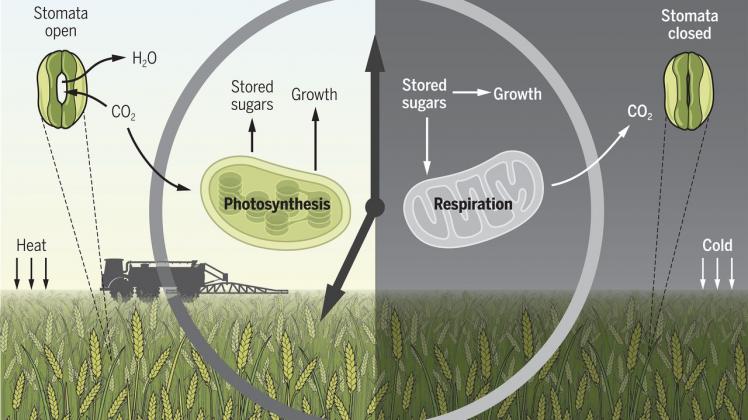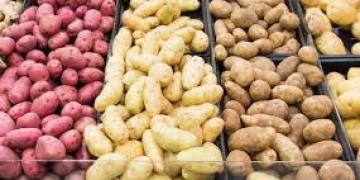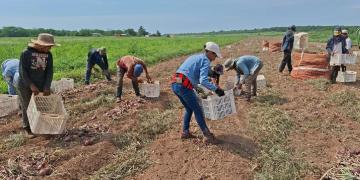Ciencia: Chronoculture, harnessing the circadian clock to improve crop yield and sustainability
The daily rhythms of agriculture Sunlight drives agriculture, and plant circadian rhythms tune the plant’s response to daily light-dark cycles. Steed et al. discuss how agricultural productivity might be improved by consideration of how the plant’s .

Structured Abstract
BACKGROUND
Global population growth, increased meat consumption, and concerns about sustainability of resources are driving forces for future agriculture to produce higher yields with reduced inputs. Studies, mostly performed in the model plant Arabidopsis thaliana, demonstrate that the circadian clock, which is a 24-hour oscillator that is an adaptation to living on a rotating planet, has profound effects on the physiology and development of plants. The circadian system contributes to the regulation of flowering, biomass, photosynthesis, water use, temperature stress responses, and pathogen defenses, which are important yield components in plant crops.
ADVANCES
Circadian timing in plants is controlled by circadian oscillators in every cell. These oscillators contain pathways of regulation with high degrees of feedback between transcriptional regulators that are expressed in a temporal series through the day and night cycle. The genetic architecture of these circadian oscillators has been largely solved in plants, animals, and fungi during the last quarter-century. This has revealed a plant-specific set of circadian oscillator genes that are common between the major crops. Genome sequencing of crop plants and genetic mapping studies have demonstrated that agricultural breeding has selected for allelic variants in circadian genes, particularly for agricultural modification of the time to flowering. At the same time, indoor crop growth in controlled environments has expanded opportunities to improve agriculture by simultaneously engineering the external environmental cycles and the internal circadian cycles of crops. This knowledge of the genetic structure of the circadian system; the discoveries that the plant circadian oscillators regulate a swathe of plant physiology, metabolism, and gene expression; and improved genetic tools mean that it is now possible to consider translational research that aims to use the circadian system as an approach to improve crop yield and reduce inputs.
OUTLOOK
Circadian biology might have translational impact in crop science through the practice of “chronoculture,” in which the daily timing of agronomic interventions and the genetic basis of circadian rhythms are targets for crop improvements and reduced inputs. In the short term, this would include the use of automation for round-the-clock monitoring and control of plant crop growth and health. Drones and low-cost single-board computers can capture high-frequency data about rhythms of photosynthesis, gas exchange, water use, stomatal movements, and growth of crops in the field to inform mechanistic and agronomic models of crop growth. Experiments in model systems have demonstrated daily rhythms in the responsiveness of plants to temperature, water, pests, and herbicides. With additional data from studies in crop species on the farm, it might be possible to develop new agronomic approaches in which interventions with nutrients, chemicals, light, and temperature are applied at the time when they are most effective. Breeding new germplasm with greater variation at circadian alleles might contribute to improved growth and sustainability. In the future, gene editing and transgenic approaches could be used to engineer crops. For example, plants with slow-running circadian clocks might be better adapted to high-latitude summers. New tissue-specific gene expression strategies that allow temporal and spatial control of transgene expression represent long-term targets for engineering crops with optimized traits. For example, alteration of circadian function specifically in phloem companion cells could be used to engineer new flowering-time traits without affecting other circadian outputs. By using split protein approaches, it should be possible to express proteins at specific times of day in desired tissues to confer stress tolerance or produce bioproducts for harvest, with less negative effects than constitutive expression. Breeding and transgene approaches are expensive because they are long-term programs subject to regulatory scrutiny. Consequently, there is a need for increased fundamental research and applied agronomic studies investigating the basic mechanism and applied uses of circadian biology in agriculture. Major goals of chronoculture research will be measuring, in the major crops in the field, the impact of the circadian oscillator on yield-relevant traits and quantifying the effect of time of day on agronomic treatments.
Download high-res image
Open in new tab
Download Powerpoint
Wheat growing in day and night cycles of light and dark and warm and cold.
In the light (left), plants photosynthesize, fixing carbon for growth and the production of transient reserves of sugars. At night (right), plants consume stored sugars. Circadian clocks anticipate these environmental cycles and regulate most plant biology.
CREDIT: KELLIE HOLOSKI/SCIENCE
Abstract
Human health is dependent on a plentiful and nutritious supply of food, primarily derived from crop plants. Rhythmic supply of light as a result of the day and night cycle led to the evolution of circadian clocks that modulate most plant physiology, photosynthesis, metabolism, and development. To regulate crop traits and adaptation, breeders have indirectly selected for variation at circadian genes. The pervasive impact of the circadian system on crops suggests that future food production might be improved by modifying circadian rhythms, engineering the timing of transgene expression, and applying agricultural treatments at the most effective time of day. We describe the applied research required to take advantage of circadian biology in agriculture to increase production and reduce inputs.
Fuente: https://science.sciencemag.org/content/372/6541/eabc9141




